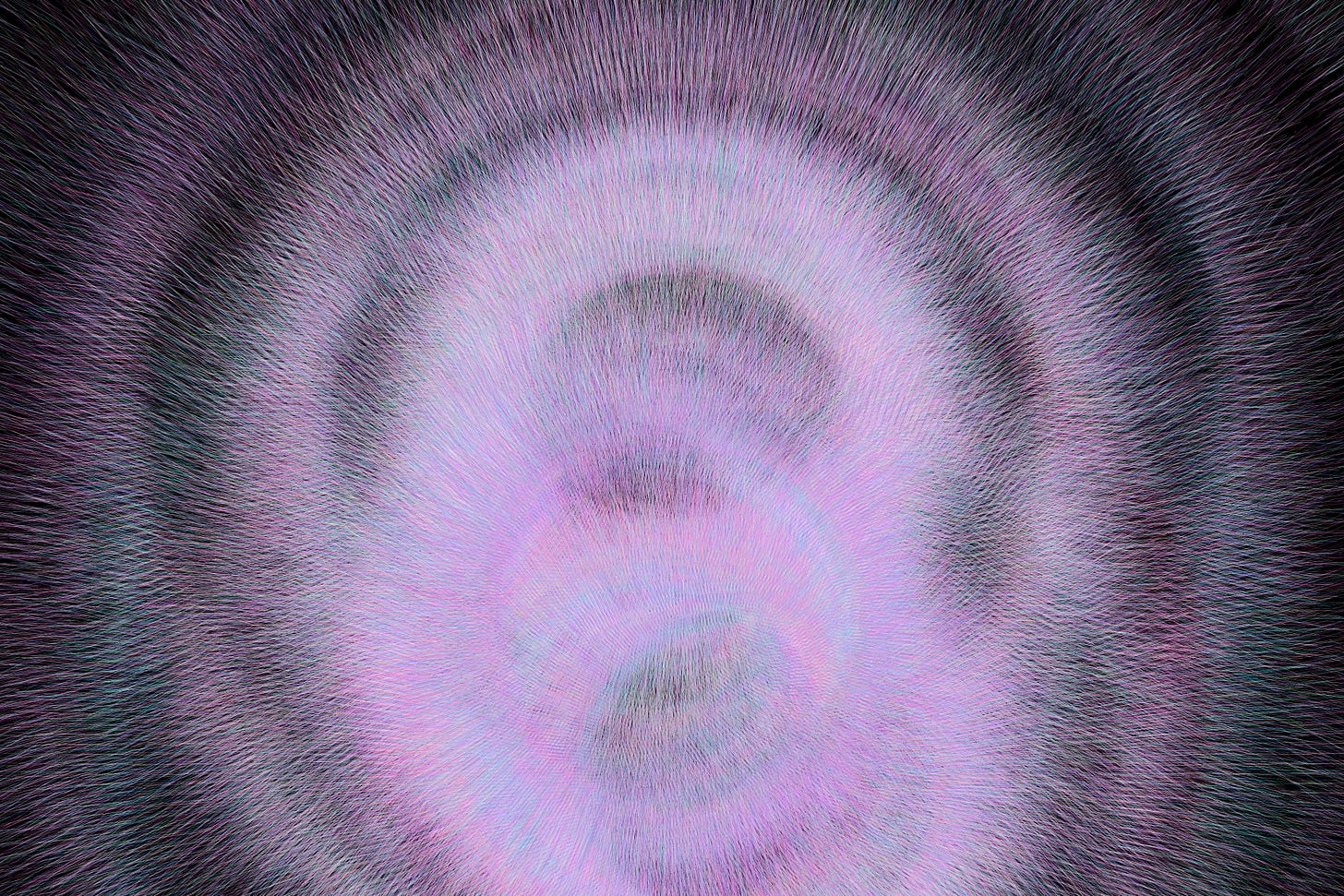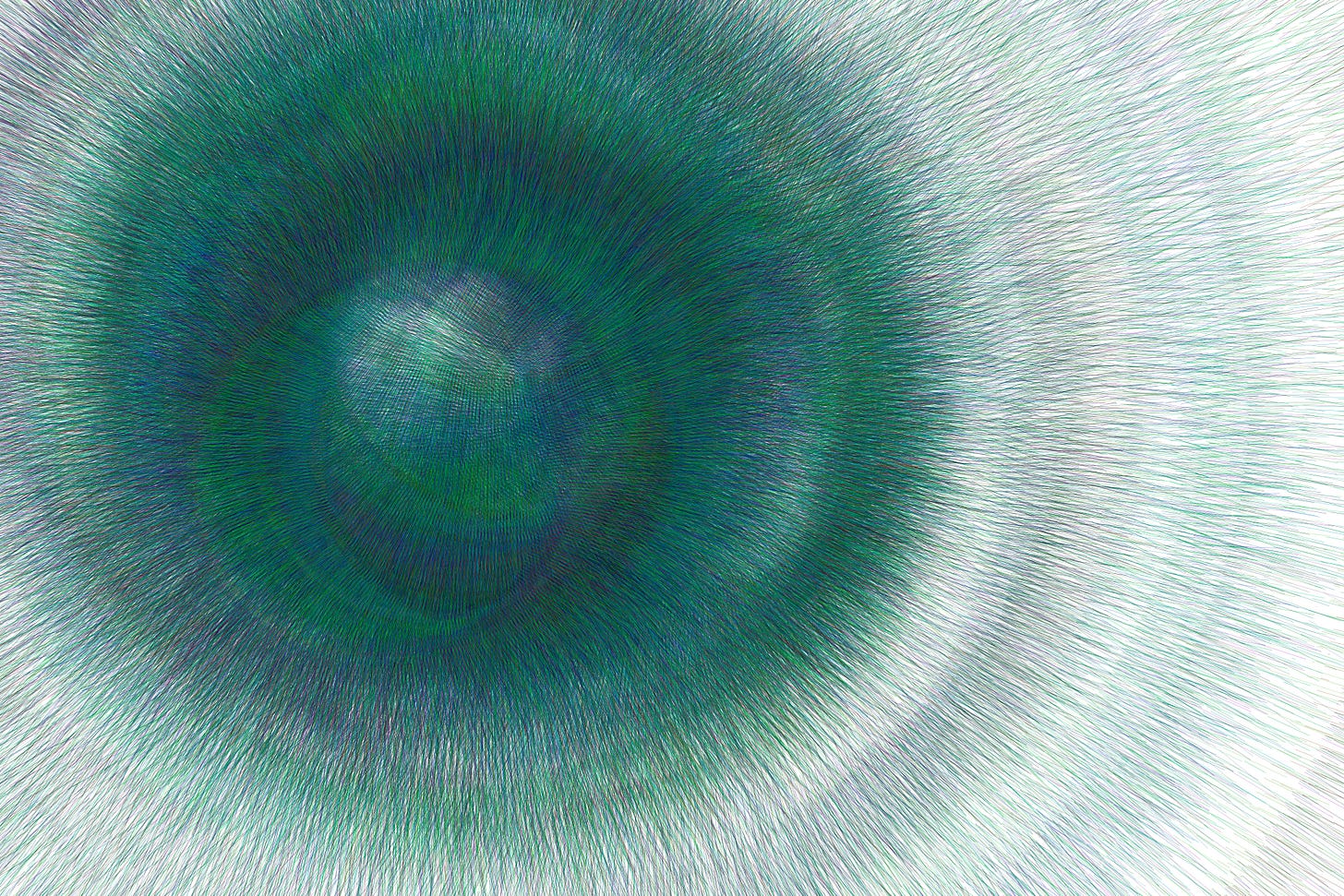As part of my work with quantum computing, I recently read David Deutsch’s 1997 book “The Fabric of Reality: The Science of Parallel Universes—and Its Implications” (link). The book presents a theoretical framework for quantum physics (which he says is interchangeable with quantum computing) and the multiverse. It’s deep, rich, and... mind blowing. I loved it!
In the last chapter, “The Ends of the Universe” (full text), Deutsch presents an idea that really took my breath away. Let me try to explain it, with some quotes from the book. Apologies in advance to probably everyone who actually understands this stuff.
(Also keep in mind that I’m approaching this as an artist. The images I’m sharing here are works in progress — inspired by these theories, as well as a continuation of my Quantum Drawing series.)
So to begin… The big bang, the moment the universe appeared out of nothing has a counterpoint — the big crunch. This is when, after the universe’s expansion reverses itself, everything collapses to a infinitely small point and then… poof. It’s all gone.
In the 1920s this moment was framed in religious terms as a point of universal unification by the priest Pierre Teilhard de Chardin — he called it the Omega Point. In the 1980s cosmologist Frank Tipler took the Omega Point concept and framed it, somewhat abstractly, in the laws of physics. His conclusion was that intelligent life would be able to control the universe’s collapse for a remarkable outcome:
During that collapse, the computational capacity of the universe diverges to infinity, and environments emulated with that computational capacity last for an infinite duration as the universe attains a cosmological singularity. This singularity is Tipler's Omega Point. With computational resources diverging to infinity, Tipler states that a society in the far future would be able to resurrect the dead by emulating alternative universes. Tipler identifies the Omega Point with God, since, in his view, the Omega Point has all the properties of God claimed by most traditional religions. (link)
Tipler believes that as the universe collapses towards the final moment of the big crunch, we will have infinite compute capability. And with that infinity of compute power, we can emulate anything and everything and… everyone who has ever lived. We will be able to exist in this Omega Point for infinity — forever staving off the end of the universe — because our emulation can run infinitely fast. This emulation is, essentially, a resurrection of the dead.
What I find fascinating is how Deutsch takes Tipler’s Omega Point theory and places it in the scientific framework of his theory of everything — giving explanations for how all of this would actually happen.
For example — how does infinite computer power come to exist at the moment of collapse? Deutsch writes:
If suitable states of particles and the gravitational field exist, then they would also provide an unlimited memory capacity, and the universe would be shrinking so fast that an infinite number of memory accesses would be feasible in a finite time before the end.
Ok. And then, with infinite computing capability, we could recreate anything:
Once one has enough computer power (and remember that eventually any desired amount will be available), one can run a virtual-reality rendering of the entire universe – indeed, the entire multiverse – starting at the Big Bang, with any desired degree of accuracy. … To the omega-point computers, nothing is intractable. … All the human beings who have ever lived anywhere in the multiverse (that is, all those whose existence was physically possible) will appear somewhere in this vast rendering. So will every extraterrestrial and artificial intelligence that could ever have existed.
And that is where we would all be reborn:
Therefore, Tipler says, we can expect to be resurrected in an environment of a type that is essentially familiar to us, except that every unpleasant element will have been removed, and many extremely pleasant elements will have been added. In other words, heaven.
The degree to which religion and science get entangled here gets a bit strange. But the earlier parts of Deutsch’s book lay the groundwork for this final chapter, so his arguments are supported by a significant theoretical framework.
I see two possible ways to read this…
The first is that we are already at the Omega Point. In this case, all of us currently exist within the massive simulation that is possible at the end of the universe. This is also known as the technological singularity.
The second is that we are “real” and have not yet reached the Omega Point. In this case there’s a lot we have to do if we ever want to achieve the immortality that an infinitely powerful simulation would enable. For in order for the infinite compute capacity to exist as the universe collapses, we will need to manage the chaos happening by continually 'steering’ the universe onto the right trajectories. This would involve, among other things, manipulating the gravitational field over the whole of space. A skill like this is beyond our capabilities today but, Deutsch argues, it is something that we could eventually learn to do over the next millions of years.
In the first case, then we’ve achieved something remarkable. We’ve survived our warring nature and threats to self-destruct, and are currently managing the universe’s collapse. We exist, and will exist forever, in the infinite singularity at the end of time. (Although, if this is heaven, as Tipler describes it, then it’s certainly not one where every unpleasant element has been removed.)
In the second case, we have our work cut out for us. Not only do we have a lot to discover, but we need to save ourselves from extinction. Can we pull ourselves out of the chaos, crisis and cruelty that we seem to forever exist in? Is the possibility of eternal life enough for us to change our ways?
Talking a look at how we, as humanity, are dealing with, our current existential threats, it can be hard to imagine that we can change enough to reach the big crunch and the Omega Point. But what’s interesting about quantum computing and the multiverse is that somewhere, in one of the universes, there are versions of us that are doing the right things to eventually make it there. It makes me think of quantum computing as an optimistic technology. And gives me reason to continue exploring it through art.








